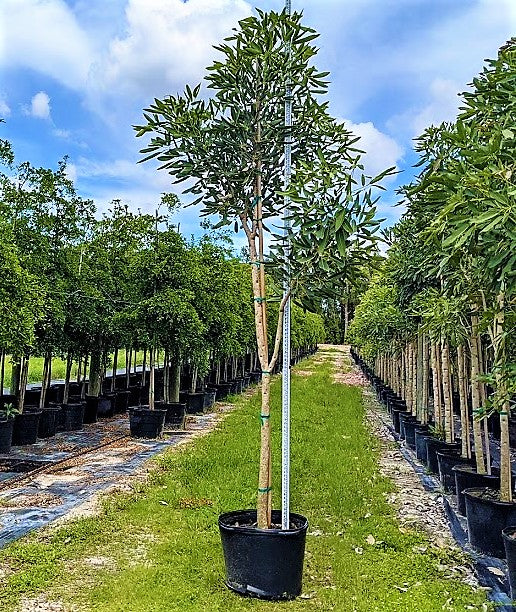Greenie.ae
Trumpet Tree, Tabebuia pentaphylla, Tabebuia Rosea
Trumpet Tree, Tabebuia pentaphylla, Tabebuia Rosea
Couldn't load pickup availability
Max Height: 20-25m Spread: 10-15m
Origin: Mexico to Colombia, Venezuela Family: Bignoniaceae
Common Name: Apamate, Poui, Tecoma, Rosy Trumpet Tree
Flower Colour: Pink Drought Tolerance: High
Salinity Tolerance: Medium Sun Tolerance: High
Wind Tolerance: Low Water Requirement: Low
PH level: Basic Pest Tolerance: High
Disease Tolerance: High Growth Rate: Fast Fragrance: No
Tabebuia rosea, also called pink poui, and rosy trumpet tree is a neotropical tree that grows up to 30m and can reach a diameter at breast height of up to 100cm. The tree is short length, with irregular, stratified ramification and only few thick branches. Tree is broadly upright, evergreen or deciduous tree with a long, smooth trunk, branching near the top. The 5-palmate leaves have oblong to ovate-elliptic, leathery, scaly, mid- to dark green leaflets. The bark can be gray to brown, in varying darkness and may be vertically fissured. Leaves are compound, digitate and deciduous. Each leaf has five leaflets of variable size, the middle one being the largest. Flowering occurs mainly in January and February, and is generally associated with dry periods; although flowering has also been observed in August, September, April and May. Flowers are large, in various tones of pink to purple, and appear while the tree has none, or very few, leaves.
Share








